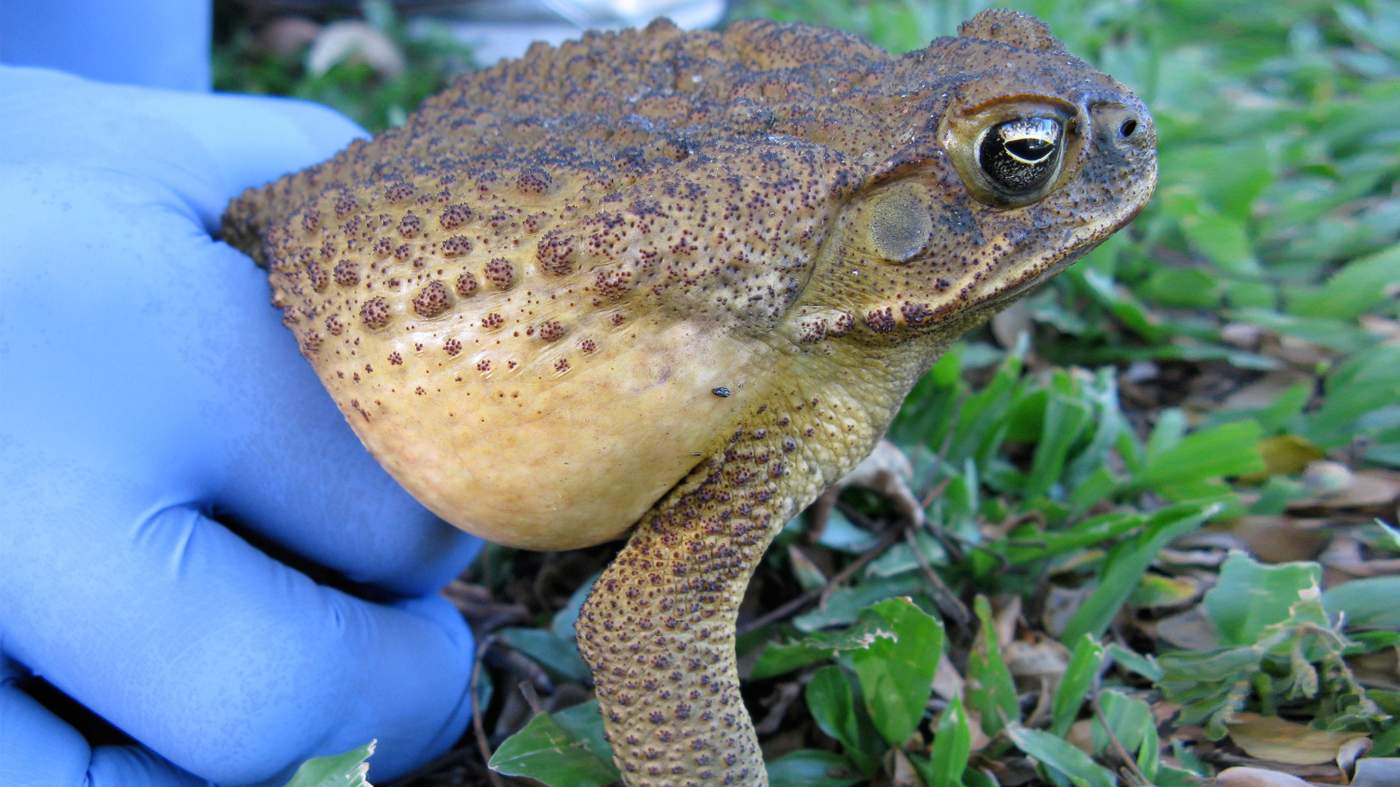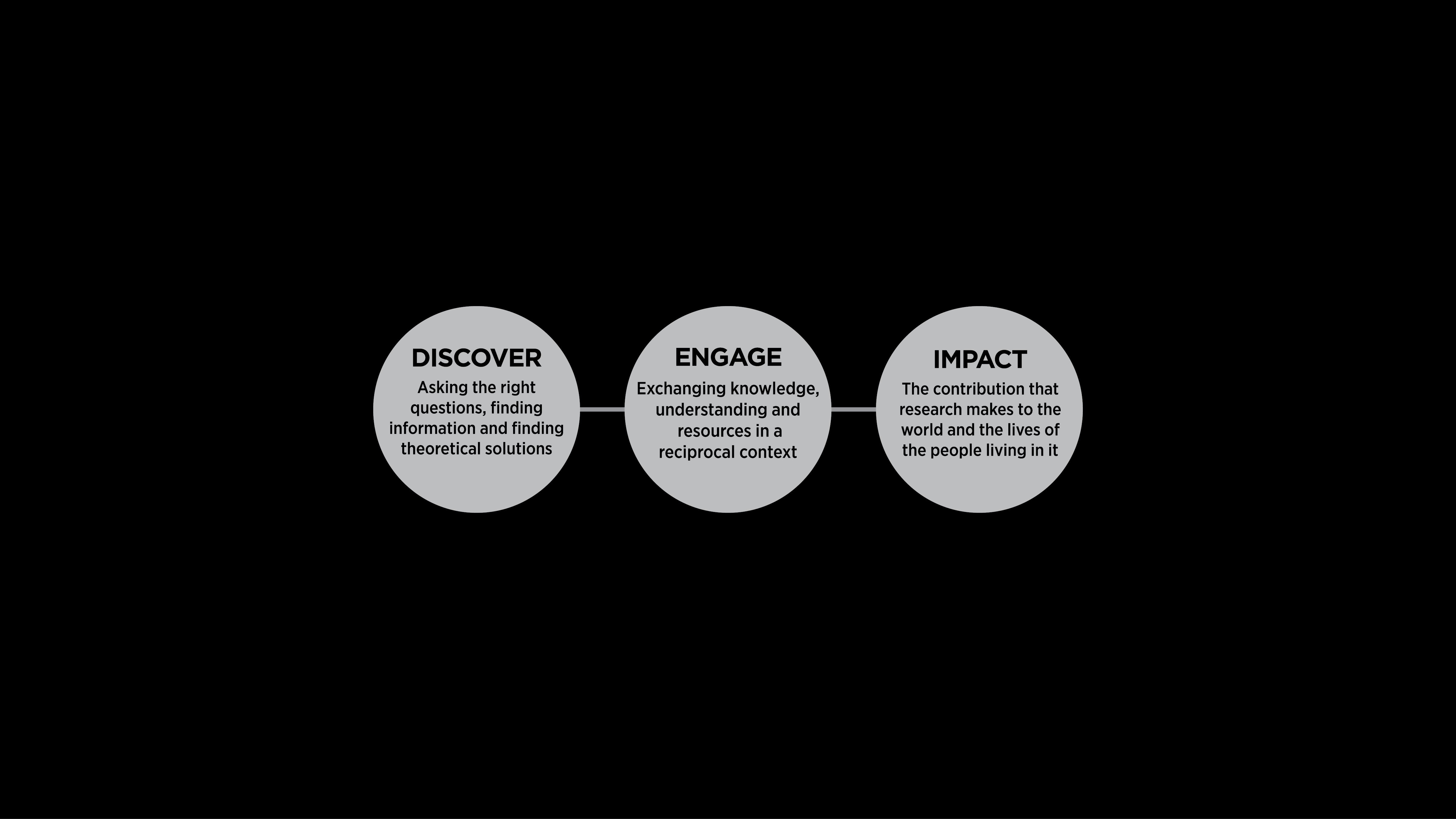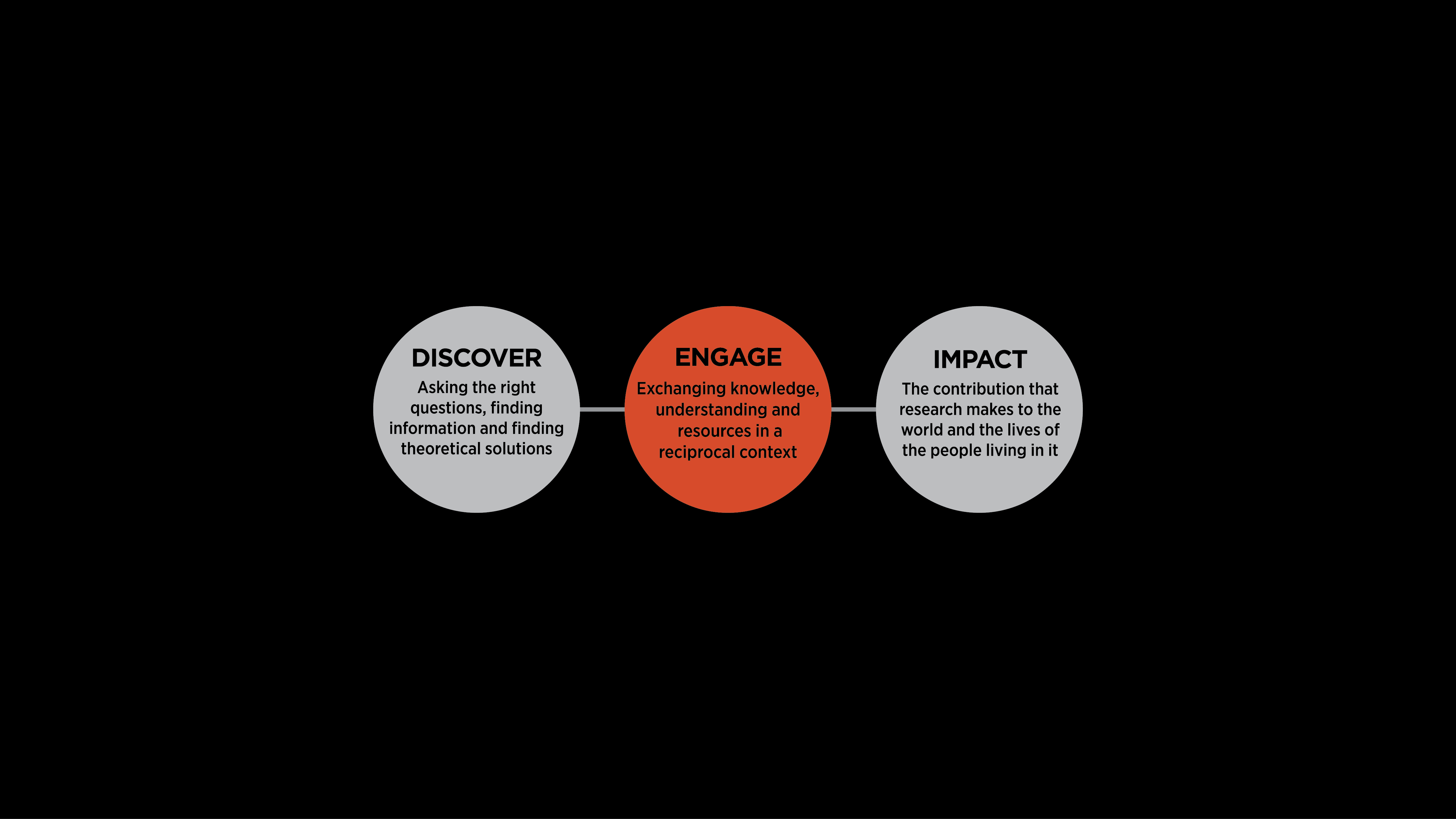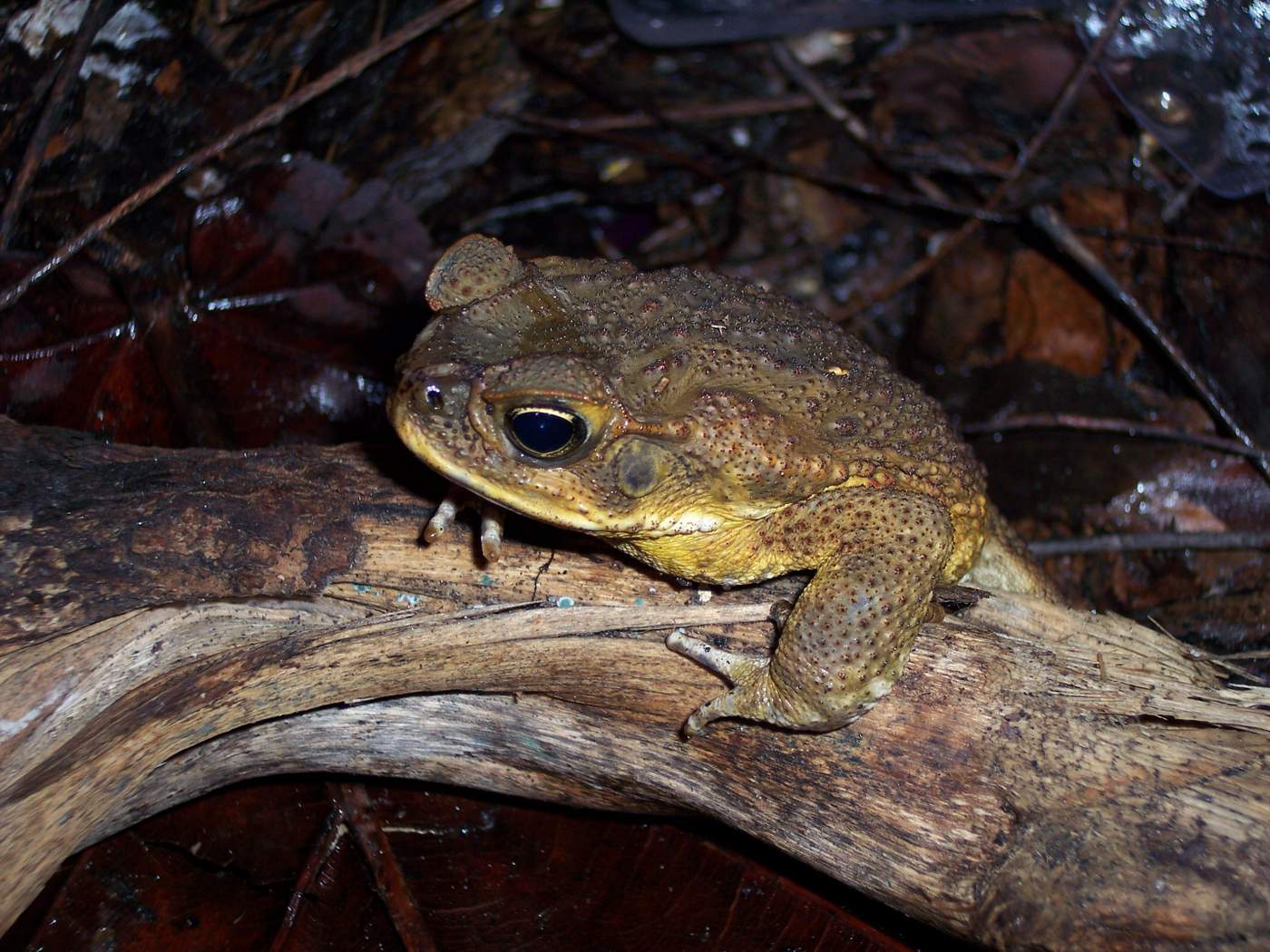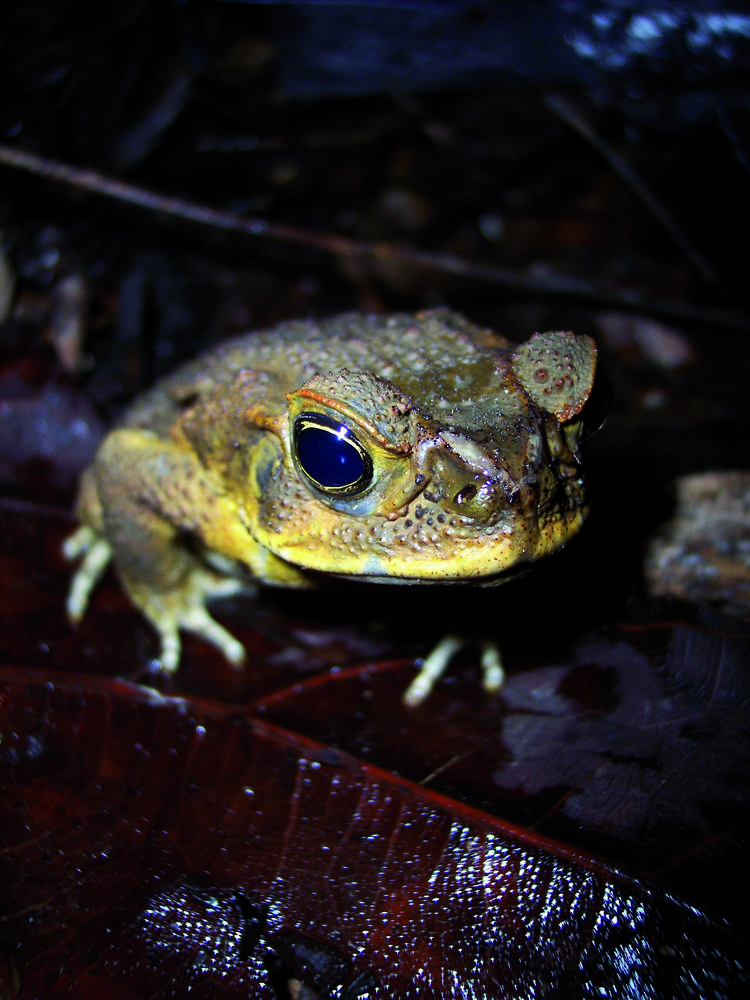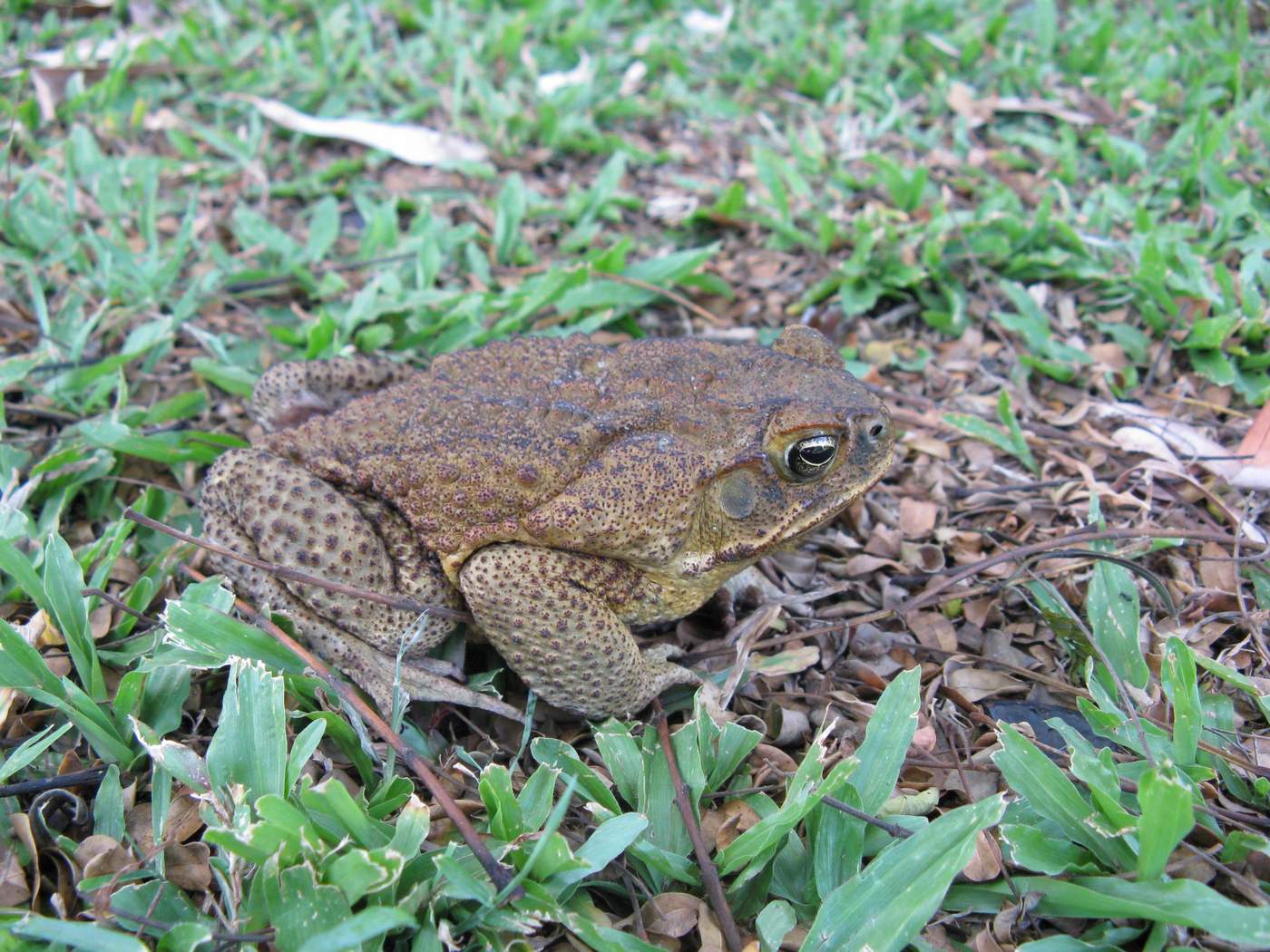Although concentrating on other research, Professor Capon managed to keep the cane toad control project simmering in his lab.
It returned to the boil about two years ago, with a major breakthrough in collaboration with University of Sydney colleague Professor Rick Shine’s team. A pheromone released by cane toad eggs was identified as a potential natural bait to trap and eradicate cane toad tadpoles.
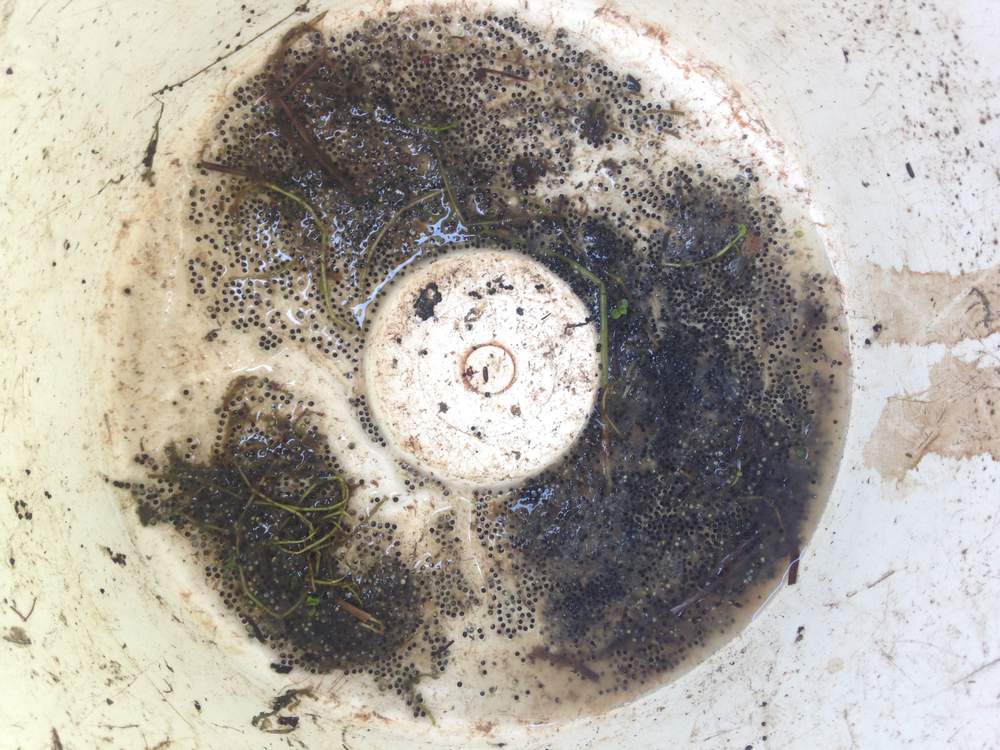
Cane toad eggs
“The ecology of the toad is that tadpoles from one clutch seek out and eat the eggs from later lays,” Professor Capon says.
“Tadpoles could do this for several reasons: to reduce genetic competition so as to wipe out all other gene-pools, or simply as a food source, but of course it’s difficult to ask them about their motives.”
Professor Capon and his team extracted the pheromone from adult toads and developed a system to lure tadpoles into traps.
The chemistry the tadpoles hone in on is replicated and placed in a very simple plastic box-trap, with simple plastic funnels fitted in holes drilled in the side. The chemical scent trail leaks from the box into the surrounding water, where the tadpoles detect it and follow it back into the trap.
The cane toad tadpole trap in action
“Once they are in the box, they find it too hard to swim out again and remain trapped inside. If one of these traps with bait is placed into a body of water, such as a dam, creek or other managed water body – something that is not flowing too fast – a plume of chemistry is generated and you can catch anywhere from several hundred to 20,000, depending on how many are in the water body,” Professor Capon says.
At this stage, engagement is key to moving the entire project forward.
Traps and baits are turning up in all the right places. Members of the public and municipal environmental officers are more than willing to test them out. The Brisbane City Council has a contractor employed to catch toads and tadpoles using Professor Capon’s approach – albeit with contractors making their own version of the baits by chopping off the toxin gland of the toad – not a particularly pleasant job. This crude formulation does work, but the UQ Institute for Molecular Bioscience baits are a lot more effective.
Importantly, the refined baits have been patented – not to prevent people from using the traps, but to make it easier to work with industry to raise much-needed funds to commercialise the product and get it on the shelves.
“If a company is going to spend $200,000 to $300,000 getting a product registered, it needs certainty that it can have commercial control long enough to get its investment back and make a profit,” Professor Capon says.
Right on cue, US company SpringStar Inc has licensed the patent and is working closely with Professor Capon and his team to refine a commercial product. SpringStar’s expertise in the manufacture and marketing of natural pest control solutions will ensure that this innovative technology becomes a practical reality, available in stores wherever the cane toad is a problem.
In the meantime, Professor Capon and his team have set up the Cane Toad Challenge, which started at IMB, but now has a UQ-wide focus. It began as a mechanism to engage with the public to create a movement for citizen science around cane toad control.
“The idea was to get the public to register through a website, to attract donations and partners to the project, and to give them the resources they needed to be able to manufacture the baits and hire community liaison officers."
"We wanted them to go out and work with community groups, regional and town councils, sporting clubs, bowling clubs, market gardens, golf courses, schools, wetlands, and whoever has a rehabilitation program. All these organisations usually have a cane toad problem, especially in Queensland,” Professor Capon says.
He says toads have a devastating effect on Indigenous cultural expectations of sacred sites, and animal and bush totems, and can kill sacred animals and despoil water-holes.
Collating data with the help of liaison officers, school groups and citizen scientists is a major aspect of the Cane Toad Challenge and reflects the concept of engagement on a grand scale. Large data is needed for exchange in a two-way flow.
Industry partner SpringStar has used this strategy in existing insect control products, and sees the value of public engagement.
The idea was to come up with some level of branding that could cross over SpringStar’s obligations with IMB and UQ, and could also provide a recognisable identity in the public arena.
The Cane Toad Challenge is keen to recruit serious partners to co-fund the operation. Professor Capon needs researchers in the lab to help manufacture and refine the baits and to work on exciting new cane toad control technologies.
Professor Capon is positive about the future of cane toad control in Australia.
“You need to reach out to the skill-set needed. No lab is going to be able to do everything and it’s critically important to get the funding in place to sustain the project. SpringStar is an ideal industry partner, and we are working to engage new partners, including CSIRO researchers.”
Timeline:
1935: 101 toads are introduced into cane fields around Cairns, Innisfail and Gordonvale to combat the native cane beetle and the Frenchi beetle: the toads have since steadily spread into NSW, NT and WA, with current population estimated at 1.5 billion
2005: The Invasive Animals Cooperative Research Centre (IACRC) approaches Professor Capon to review past efforts, and recommend new options for cane toad control
2006: IACRC secures two-year Queensland State Government funding to cover a review by Professor Capon
2008: Report from Professor Capon to IACRC identifies new chemical ecology-based control options, but funding ends before these can be explored
2008–present: Professor Capon cane toad control research (unfunded) continues at a greatly reduced pace with a strategic collaboration with Professor Rick Shine (University of Sydney)
2012: Shine and Capon labs develop an innovative 'chemical ecology' solution – a pheromone-based cane toad tadpole trapping technology
2012: Cane toad tadpole trapping technology is patented
2012: Cane toad tadpole trapping technology is published
2012: Cane toad tadpole trapping technology attracts media attention
2013: NT community groups successfully use cane toad tadpole trapping technology
2015: Brisbane City Council contracts Technigro to successfully deploy cane toad tadpole trapping technology in Queensland Botanical Gardens
2016: Moreton Bay Regional Council successfully trials cane toad tadpole trapping technology on Bribie Island
June 2016: SpringStar Inc license cane toad tadpole trapping technology patent
June 2016: Cane Toad Challenge is established to deliver cane toad trapping technology direct to the public
May 2017: North Coast Local Lands Service (Clarence Valley, NSW) signs Memorandum of Understanding with UQ for pheromone bait traps
Current: Research and development funding urgently needed to deliver cane toad trapping technology direct to the public, and to support the ongoing discovery of new chemical ecology control solutions

